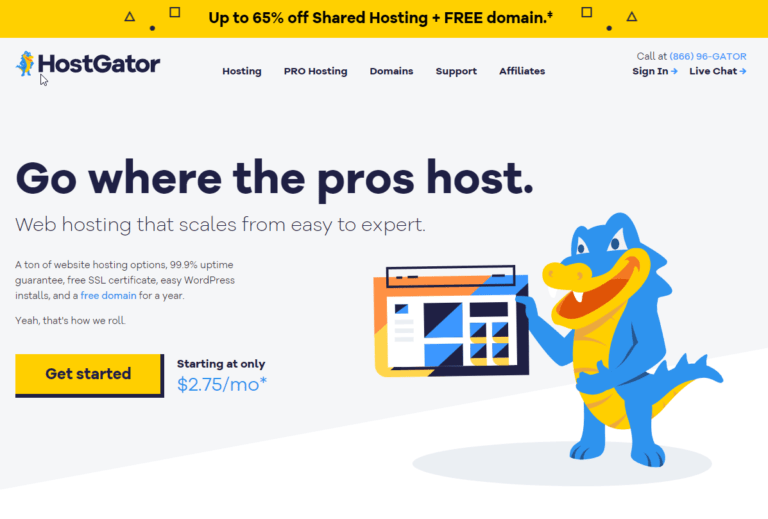How To Start A Business Blog
“Unlock the power of your business with a successful blog.”
Introduction
Starting a business blog can be a great way to promote your brand, connect with customers, and establish yourself as an industry expert. However, it can be overwhelming to know where to begin. In this article, we will provide a step-by-step guide on how to start a business blog, including choosing a platform, creating content, and promoting your blog.
Choosing the Right Blogging Platform
Starting a business blog can be a great way to promote your brand, connect with your audience, and establish yourself as an expert in your industry. However, before you can start creating content, you need to choose the right blogging platform. With so many options available, it can be overwhelming to decide which one is best for your business. In this article, we’ll explore some of the most popular blogging platforms and help you choose the one that’s right for you.
WordPress
WordPress is one of the most popular blogging platforms in the world, and for good reason. It’s easy to use, customizable, and offers a wide range of features and plugins. Whether you’re a beginner or an experienced blogger, WordPress is a great choice for anyone looking to start a business blog.
One of the biggest advantages of WordPress is its flexibility. You can choose from thousands of themes and plugins to customize your blog and make it your own. Plus, WordPress is SEO-friendly, which means your blog will be more likely to rank well in search engine results pages.
However, WordPress does have a bit of a learning curve, especially if you’re new to blogging. You’ll need to spend some time learning how to use the platform and its various features. Additionally, while WordPress itself is free, you’ll need to pay for hosting and any premium themes or plugins you want to use.
Blogger
Blogger is another popular blogging platform, and it’s a great choice for beginners. It’s owned by Google, so it’s easy to integrate with other Google products like Google Analytics and AdSense. Plus, it’s free to use and comes with a variety of templates to choose from.
One of the biggest advantages of Blogger is its simplicity. It’s easy to set up and use, even if you have no experience with blogging. Additionally, because it’s owned by Google, it’s more likely to rank well in search engine results pages.
However, Blogger does have some limitations. It’s not as customizable as WordPress, and there are fewer plugins and themes available. Additionally, because it’s a free platform, you don’t have as much control over your blog as you would with a self-hosted platform like WordPress.
Medium
Medium is a newer blogging platform that’s gaining popularity among bloggers and writers. It’s a great choice if you’re looking to build an audience and connect with other writers and bloggers in your industry. Plus, it’s free to use and comes with a built-in audience.
One of the biggest advantages of Medium is its community. You can connect with other writers and bloggers in your industry, and your content is more likely to be seen by a wider audience. Additionally, Medium is easy to use and doesn’t require any technical skills.
However, Medium does have some limitations. It’s not as customizable as WordPress or Blogger, and you don’t have as much control over your content. Additionally, because it’s a free platform, you don’t own your content, which means it could be deleted or removed at any time.
Conclusion
Choosing the right blogging platform is an important decision when starting a business blog. Each platform has its own advantages and disadvantages, so it’s important to consider your goals and needs before making a decision. Whether you choose WordPress, Blogger, Medium, or another platform, the most important thing is to start creating content and building your audience. With time and effort, your business blog can become a valuable asset for your brand.
Creating Quality Content

Starting a business blog can be a great way to promote your brand, connect with your audience, and establish yourself as an authority in your industry. However, creating quality content is key to the success of your blog. In this article, we’ll discuss some tips on how to create quality content for your business blog.
First and foremost, it’s important to understand your audience. Who are they? What are their interests? What are their pain points? By understanding your audience, you can create content that resonates with them and provides value. You can use tools like Google Analytics to gather data on your audience and their behavior on your website.
Once you have a good understanding of your audience, it’s time to brainstorm content ideas. Think about what topics would be relevant and interesting to your audience. You can also look at what your competitors are writing about and put your own spin on those topics. Don’t be afraid to get creative and think outside the box.
When it comes to actually writing your blog posts, there are a few things to keep in mind. First, make sure your writing is clear and concise. Use short sentences and paragraphs, and avoid using jargon or technical terms that your audience may not understand. You want your content to be accessible to as many people as possible.
Second, make sure your writing is engaging. Use storytelling techniques to draw your readers in and keep them interested. Use examples and anecdotes to illustrate your points. And don’t be afraid to inject some personality into your writing – after all, people want to connect with other people, not faceless corporations.
Third, make sure your writing is informative. Your readers should come away from your blog posts having learned something new or gained a new perspective. Make sure your content is well-researched and accurate, and provide links to any sources you use.
Finally, make sure your writing is optimized for search engines. This means using keywords strategically throughout your content, including in your headlines, subheadings, and body text. But don’t overdo it – keyword stuffing can actually hurt your search engine rankings. Use keywords naturally and only where they make sense.
In addition to writing blog posts, there are other types of content you can create for your business blog. For example, you could create infographics, videos, or podcasts. These types of content can be a great way to mix things up and provide your audience with different types of content to engage with.
When creating these types of content, make sure they are visually appealing and easy to consume. Use graphics and images to break up text and make your content more engaging. And make sure your content is accessible – for example, if you create a video, make sure it has closed captions for viewers who are deaf or hard of hearing.
In conclusion, creating quality content is key to the success of your business blog. By understanding your audience, brainstorming content ideas, writing engaging and informative posts, and creating other types of content, you can establish yourself as an authority in your industry and connect with your audience in a meaningful way. So get started today – your audience is waiting!
Promoting Your Blog
Promoting Your Blog
Now that you have created your business blog, it’s time to promote it. Promoting your blog is essential to attract readers and increase traffic to your website. Here are some tips on how to promote your business blog effectively.
1. Share your blog on social media
Social media is a powerful tool to promote your blog. Share your blog posts on your social media accounts such as Facebook, Twitter, LinkedIn, and Instagram. Make sure to use relevant hashtags to reach a wider audience. You can also join relevant groups on social media and share your blog posts there.
2. Guest blogging
Guest blogging is a great way to promote your blog and increase your reach. Find other blogs in your niche and offer to write a guest post for them. In return, they can link back to your blog. This will not only help you reach a new audience but also improve your website’s SEO.
3. Email marketing
Email marketing is a great way to promote your blog and keep your subscribers engaged. Send out a weekly or monthly newsletter with links to your latest blog posts. Make sure to include a call-to-action in your emails to encourage your subscribers to visit your blog.
4. Collaborate with other bloggers
Collaborating with other bloggers in your niche can help you reach a wider audience. You can collaborate on a blog post or a social media campaign. This will not only help you promote your blog but also build relationships with other bloggers in your industry.
5. Use paid advertising
Paid advertising can help you reach a wider audience and promote your blog effectively. You can use platforms such as Google AdWords, Facebook Ads, and Twitter Ads to promote your blog. Make sure to target your ads to your ideal audience to get the best results.
6. Participate in online communities
Participating in online communities such as forums and Facebook groups can help you promote your blog and build relationships with your audience. Make sure to provide value and engage with your audience to build trust and credibility.
7. Use visual content
Visual content such as images and videos can help you promote your blog and increase engagement. Use high-quality images and videos in your blog posts and share them on social media. This will help you attract more readers and increase your reach.
In conclusion, promoting your business blog is essential to attract readers and increase traffic to your website. Use these tips to promote your blog effectively and reach a wider audience. Remember to provide value and engage with your audience to build trust and credibility.
Measuring Your Success
Starting a business blog can be a great way to connect with your audience, establish your brand, and drive traffic to your website. However, it’s important to measure your success to ensure that your efforts are paying off. In this article, we’ll discuss some key metrics to track and how to use them to improve your blog.
First and foremost, you’ll want to track your website traffic. This includes the number of visitors to your site, how long they stay, and which pages they visit. Google Analytics is a great tool for tracking this information. By monitoring your traffic, you can see which blog posts are the most popular and adjust your content strategy accordingly.
Another important metric to track is engagement. This includes comments, social media shares, and backlinks. Engagement is a good indicator of how well your content is resonating with your audience. If you’re not getting much engagement, it may be time to reevaluate your content strategy or try a different approach.
Conversion rates are also important to track. This includes the number of visitors who take a desired action, such as filling out a contact form or making a purchase. By tracking your conversion rates, you can see which blog posts are driving the most conversions and adjust your strategy accordingly.
In addition to these metrics, it’s important to track your search engine rankings. This includes where your blog posts rank in search engine results pages (SERPs) for relevant keywords. By monitoring your rankings, you can see which blog posts are performing well and which ones need improvement. You can also use this information to optimize your content for better rankings.
Once you’ve identified the key metrics to track, it’s important to set goals and benchmarks. This will help you measure your progress and determine whether your efforts are paying off. For example, you may set a goal to increase website traffic by 20% over the next six months. By tracking your progress, you can see whether you’re on track to meet your goal and adjust your strategy accordingly.
It’s also important to regularly review your metrics and adjust your strategy as needed. This may involve tweaking your content strategy, optimizing your blog posts for better search engine rankings, or experimenting with different types of content. By regularly reviewing your metrics, you can ensure that your blog is meeting your business goals and driving results.
In conclusion, measuring your success is an important part of starting a business blog. By tracking key metrics such as website traffic, engagement, conversion rates, and search engine rankings, you can see how well your blog is performing and adjust your strategy accordingly. Remember to set goals and benchmarks, regularly review your metrics, and adjust your strategy as needed. With these tips, you can create a successful business blog that drives results for your business.
Conclusion
Conclusion: Starting a business blog can be a great way to establish your brand, connect with customers, and drive traffic to your website. To get started, choose a platform, define your target audience, create a content strategy, and promote your blog through social media and other channels. With dedication and consistency, your business blog can become a valuable asset for your company.



![How Much Money Do Blogs Make? [2023 Ultimate Guide] 8 How Much Money Do Blogs Make? [2023 Ultimate Guide]](https://robinesson.com/wp-content/uploads/2022/05/image-3-768x511.png)
